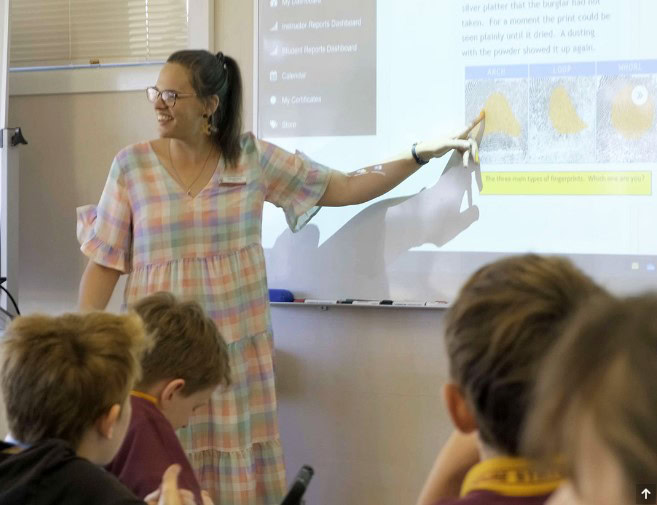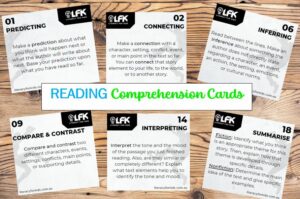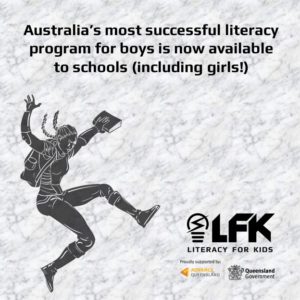Six strategies to help older students to catch up in their literacy

Early last week I was interviewed by ABC radio on how we can help boys with their literacy. The callins from listeners was overwhelming. So I wanted to write an article on how we can help our older struggling readers to improve their literacy.
As state education departments increasingly adopt structured methods for teaching early literacy, with Victoria recently embracing evidence-based instruction, it is hoped that the number of students needing extra help to master this crucial skill will decrease over time.
To combat poor literacy outcomes effectively, educators should provide explicit instruction in the core components of reading—phonemic awareness, phonics, vocabulary, fluency, and comprehension—in every early years classroom.
Research highlights systematic synthetic phonics as the most effective method for teaching reading. This approach systematically and explicitly teaches the alphabetic code in a sequence, enabling students to blend sounds and read words.
Repeated decoding of words using letter-sound relationships helps commit these words to long-term memory through orthographic mapping, contributing to fluent reading.
Nonetheless, some students will always need additional support through intervention programs.
In 2023, nearly a quarter of Australia’s Year 5 students did not reach reading proficiency according to NAPLAN. This statistic is alarmingly high and reducing reading failure rates should be a priority for education policymakers and schools across the country.
By the age of 10 or 11, students struggling with reading have often faced years of frustration and disappointment, and they are usually aware of falling behind their peers, which can affect their self-esteem. The statistics for our boys is worse still!
While early intervention is ideal, support can still be effective when introduced later. Data from our Literacy for Boys and Literacy for Kids programs shwo that students CAN improve their literacy, even if they are in high school.
Here are six strategies to help older, struggling readers catch up:
An Assessment may be necessary
Various factors may contribute to a child’s reading difficulties. Standardised screening assessments, conducted by classroom teachers, learning support teachers, psychologists, or speech pathologists, can help identify a student’s strengths and weaknesses and determine the most suitable reading intervention.
For instance, a child with weak word-level skills might guess words based on initial letters or visual and contextual clues, which impairs fluency and comprehension. In such cases, a phonics-based intervention is often most effective.
Conversely, a student who reads accurately but struggles with comprehension may benefit more from a language-based intervention that focuses on vocabulary development.
** Contact us to see how we can help with an initial assessment ~ info@literacyforkids.com.au
Benefits of Both Small Group and Whole Class Instruction
Research shows that low-progress readers in the later primary/secondary years make minimal progress in regular classroom settings. However, substantial improvements are possible with evidence-based interventions delivered in both small group and whole class situations with sufficient intensity.
A Case Study
The Literacy for Kids program (which is designed for students from Years 3 to Year 9), was used by a large state primary school in four one-hour lessons per week. Low-literacy learners were placed in small groups with teacher-support, whilst other students worked on LFK independently.
An analysis of approximately 300 students in Years 3 to 6 who participated Literacy for Kids for two terms showed significant improvements in word reading accuracy, non-word reading accuracy, spelling accuracy, passage reading fluency, passage reading accuracy, and reading comprehension. Notably, students’ nonword reading ability—an indicator of decoding unfamiliar words—improved considerably, with the average reading age increasing from seven years and three months to nine years and one month.
Work on Comprehension Skills
Reading comprehension, which involves understanding the meaning and intent of a text, requires both knowledge (background knowledge, vocabulary, text structures) and skills (retrieving and connecting knowledge, making inferences, understanding grammar and syntax).
Students who struggle with comprehension but have adequate word reading skills will benefit from explicit instruction in strategies and skills for purposeful reading, including vocabulary development, grammar, inferencing, and text structure. Literacy for Kids allows for whole class, explicit teaching of these skills, then all students can work on their appropriate levels.
Everyday Practice
Low-progress readers need ample opportunities to practice reading. Unfortunately, previous struggles may lead some students to resist practice. One-on-one “reinforced reading” sessions, guided by a teacher using “pause, prompt, and praise” strategies, can boost students’ phonics skills and build their confidence and enjoyment of reading.
Exposure to a variety of fiction and non-fiction texts will also enhance fluency, background knowledge, and vocabulary, which supports reading comprehension.
Engaging students is our secret to reading success. Topics that feature both fiction and non-fiction texts (e.g. rollercoasters, bubblegum testing, sports, science, amazing animals, how stuff works, extreme sports) are designed to provide choice, challenge and success with reading.
I can’t stress enough that parents need to take a greater role in their child’s reading. It can’t be left solely up to teachers. Regular reading of 15 – 30 minutes each day has proven benefits.
Inclusivity and Self-Esteem
In my experience these two go hand-in-hand. If we are to build upon students’ confidence, they don’t want to feel ‘different’ or be isolated from the other classmates. This is particularly true of boys. This is one of the greatest features of our programs ~ all learners engage with the one platform. They can share their knowledge with classmates who may be 2 or 3 reading levels above them but the entire class is using the one learning platform. I have witnessed this firsthand in the classrooms that I visit – learners love sharing new information with their peers. The biggest bonus is that teachers are monitoring all their learners under one Teacher Dashboard.
Reading Can Be Fun
Teaching reading should never be seen as a mere obligation, even for struggling students. While reading is crucial for educational and life outcomes, it should also be an enjoyable experience. The economic outcome for every child is improved with greater literacy.
Want your students to finish strong in their literacy? Want more from your literacy program? Contact us for a 30-day free trial in your school or classroom. New schools receive these great ‘Turn and Talk’ comprehension cards for their classroom ~

Student Comprehension Cards
Check out our blogs for more ideas and tips.
Identify Comprehension Gaps with these great cards
Steps to Successfully Support Disengaged Learners
See us featured in The Educator Australia magazine
Research confirms that early reading boosts literacy
Boys Love LFB – Here’s what they have to say!
Get boys reading in the digital age
Why write? Tips for reluctant writers
Brought to you by Tanya Grambower


